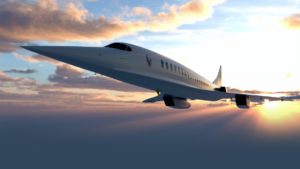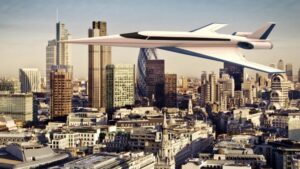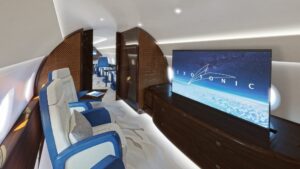- Several companies are developing a supersonic jet, both for private flights and for civil flights.
- The they can fly over the Atlantic in less than 3 hours
- Yet, there are hurdles to overcome: they are polluting, noisy, guzzle much fuel and have narrow cabins
Supersonic jets, between enthusiasm and hurdles
Of course there’s a certain euphoria among aviation lovers and protagonists surrounding thepossibility of flying at twice the sound speed, 2 1/2 times faster than current private jets and airliners. Still, several hurdles could hamper the development in even compromise the achievement of all the supersonic projects.
- To start with, despite the assurances of some future supersonic jet producers, breaking the sound barrier creates the typical noisy boom.
- Then, they are not ecological at all,since they would burn roughly three times as much fuel per passenger than a normal subsonic private jet or airliner. Nevertheless, they could use biofuels i.e. sustainable aviation fuels (S.A.F.)to solve the pollution problem, although the latter are still twice as expensive as kérosène
- Their cabins are not as large as those of subsonic jets, since in order to allow such high speeds, a supersonic jet fuselage must be quite narrow.
- There are also financing difficulties.The 1st company to make such an endeavor, Aerion, went bankrupt in May 2021 despite receiving commitments totaling $11 billion from private flights companies FlexJet and et Netjets.
The companies developing a supersonic jet
Boom Supersonic has got plans for a 40- to 50-passenger airliner, boast its planned use of biofuels like sustainable aviation fue. It spent $150 million, more than half of $270 million it raised, building the XB1 demonstrator dubbed “Baby Boom.” Its 1st product should be the Overture jetliner sold to United and Japan Airlines, with the former buying 15 planes. The sheer fact of having something to fly enhanced Boom’s profile. It didn’t make the same mistake as Aerion, that discouraged investors since they only had projects and no prototype whatsoever, . Despite having so many PhD’s in its team. Still, to fully develop overture, it needs investors willing to commit over $6 to $8 billion.
The first flight of Boom’s XB1 supersonic demonstrator is scheduled for early 2022.
California’s Exosonic also touts sustainable aviation fuels with its 70-passenger jetliner. It develops also a supersonic jet intended for the US VP and his staff. The interior of Exosonic’s Air Force 2 includes a situation room with advanced communications to handle world crises in real time.
Boston-based Spike Aerospace is developing an 18-passenger private jet with a proprietary technology it claims will keep the sonic boom at the level of a vacuum cleaner. It recently received FAA approval for limited testing of its design over land.








